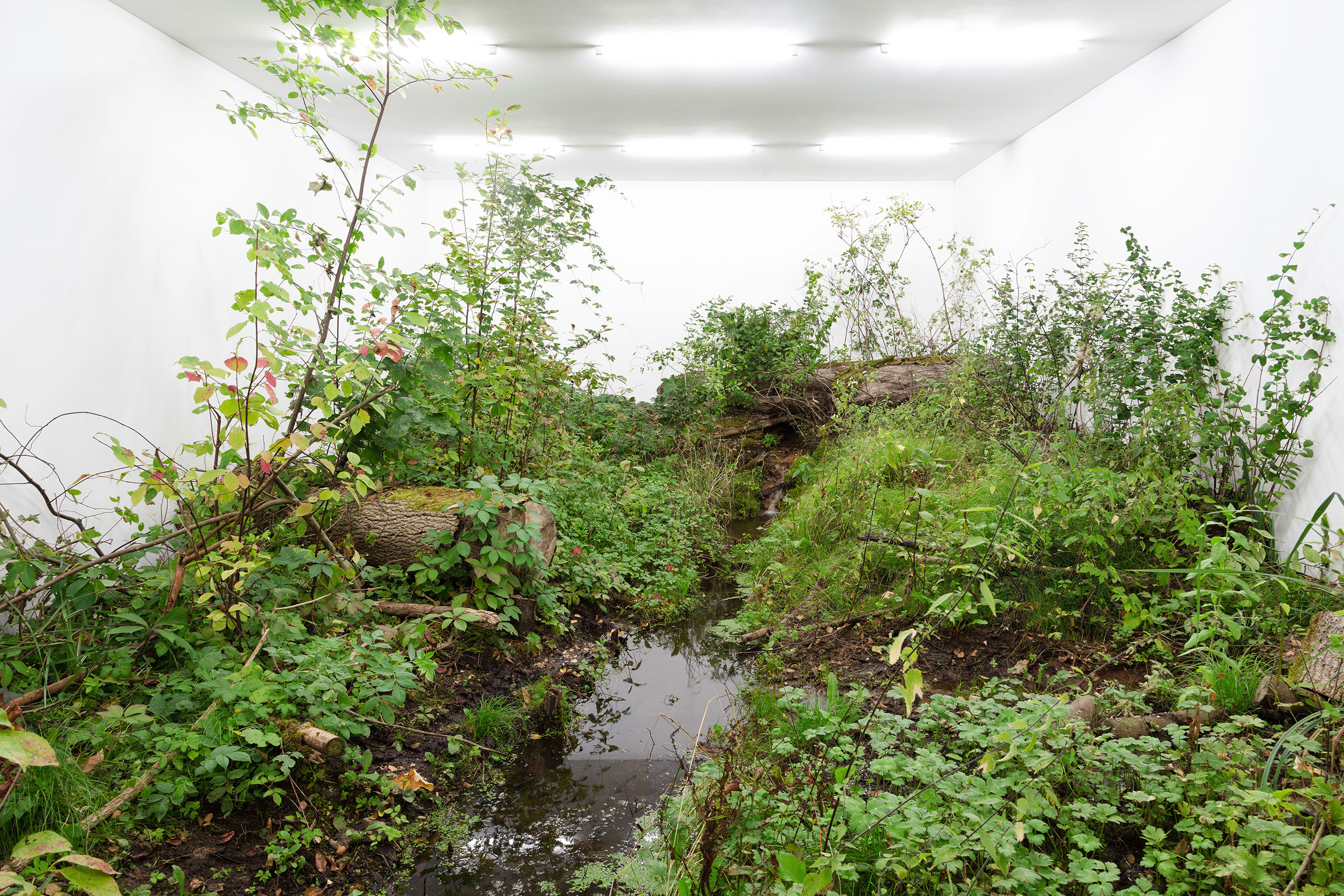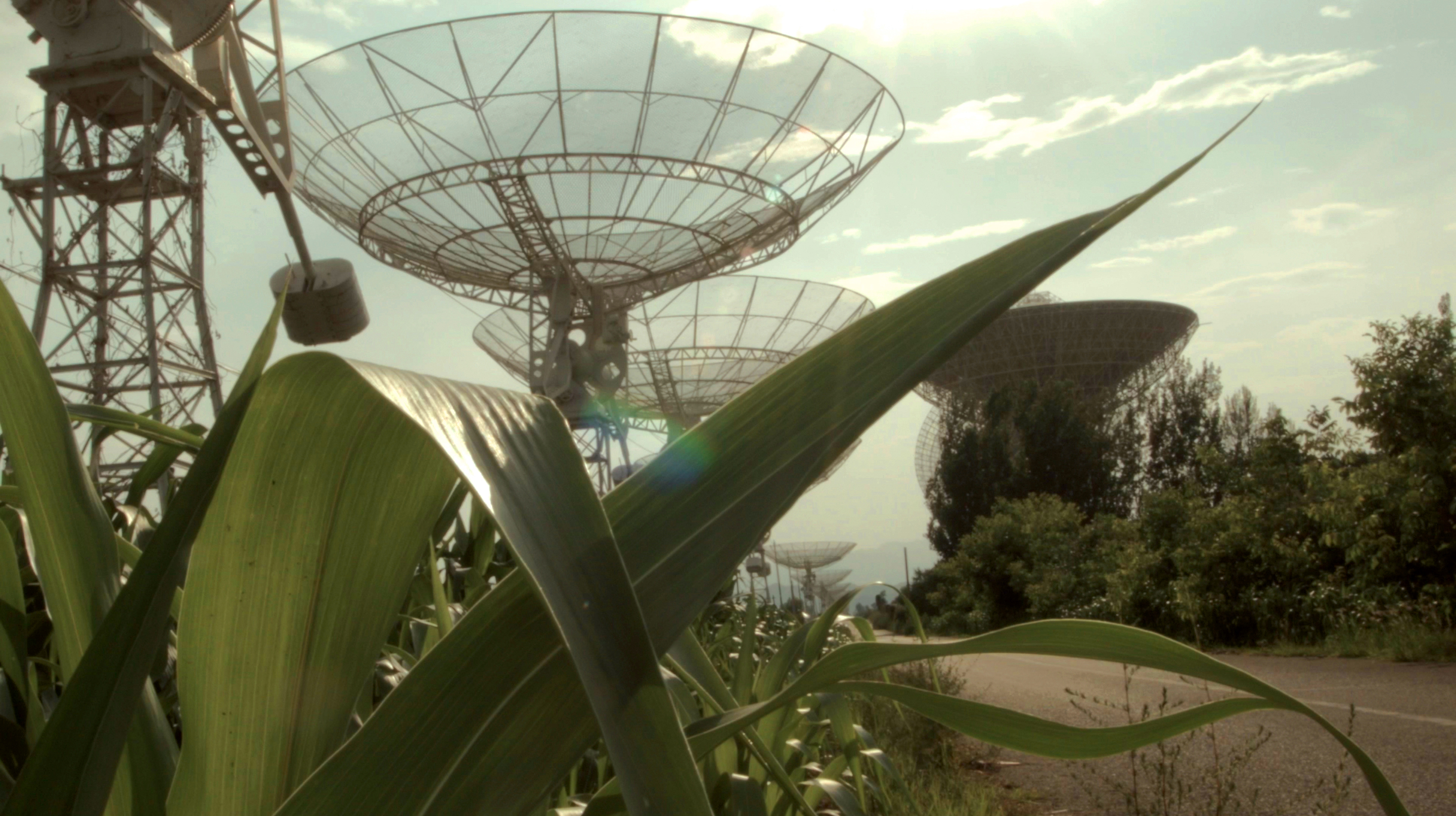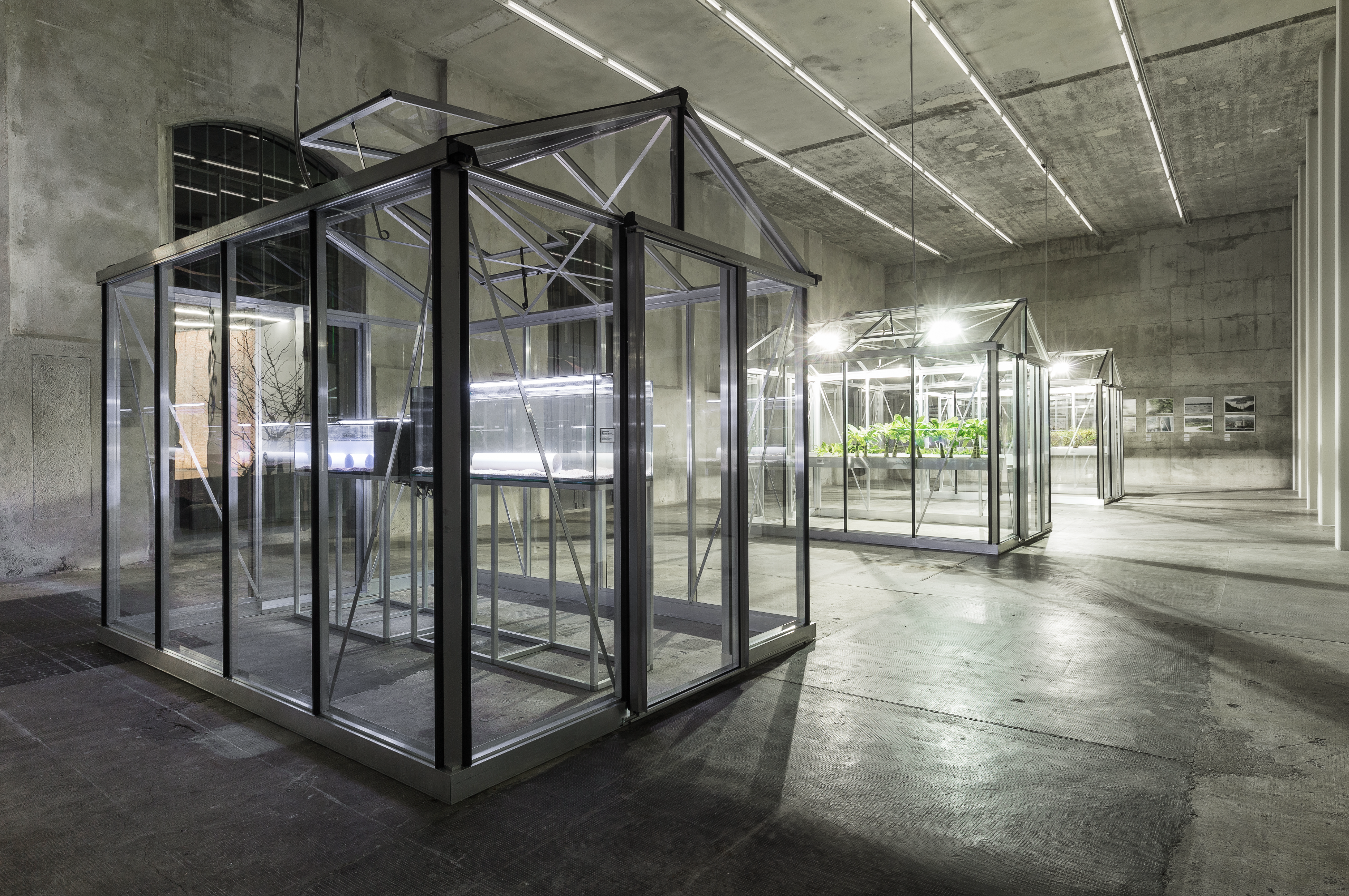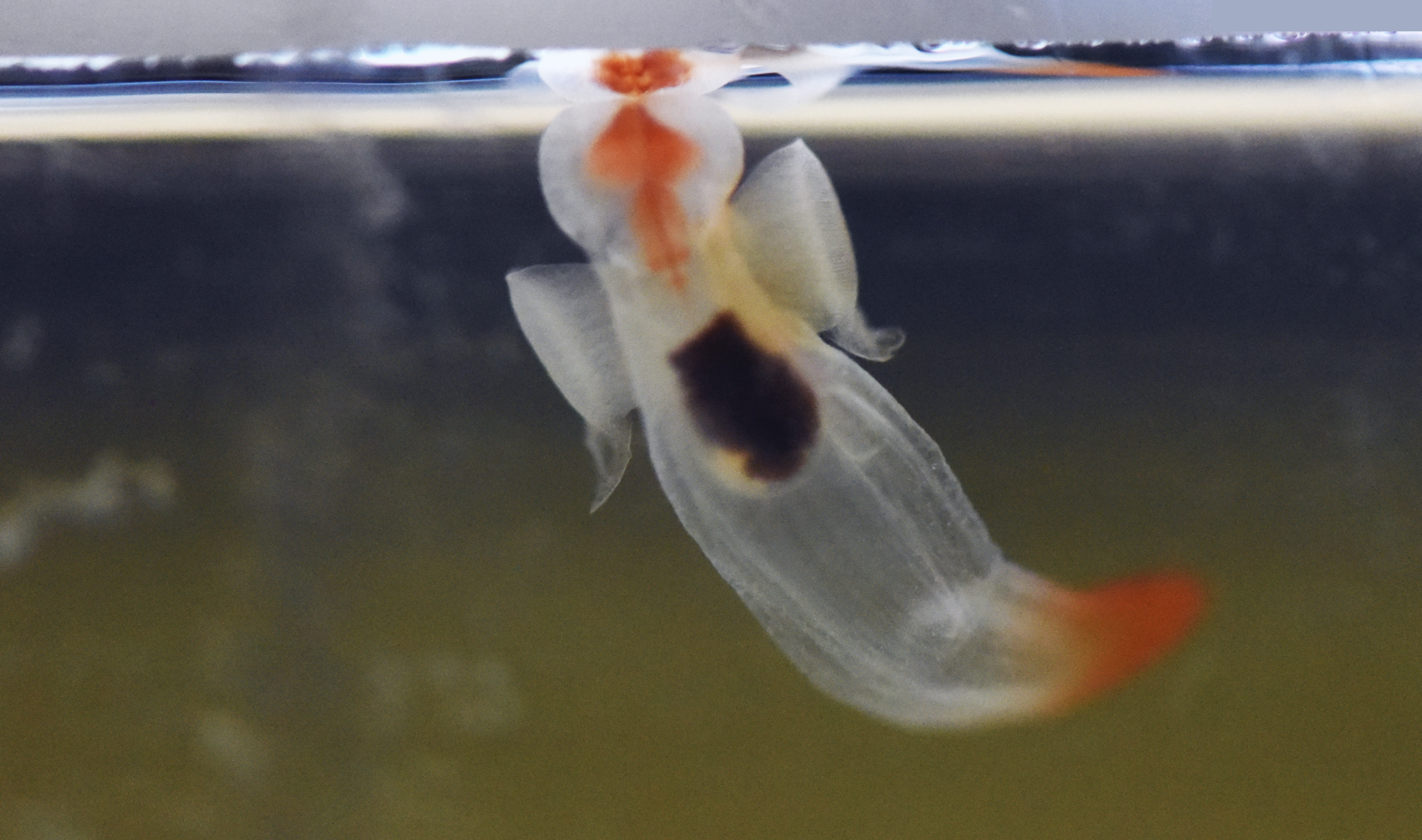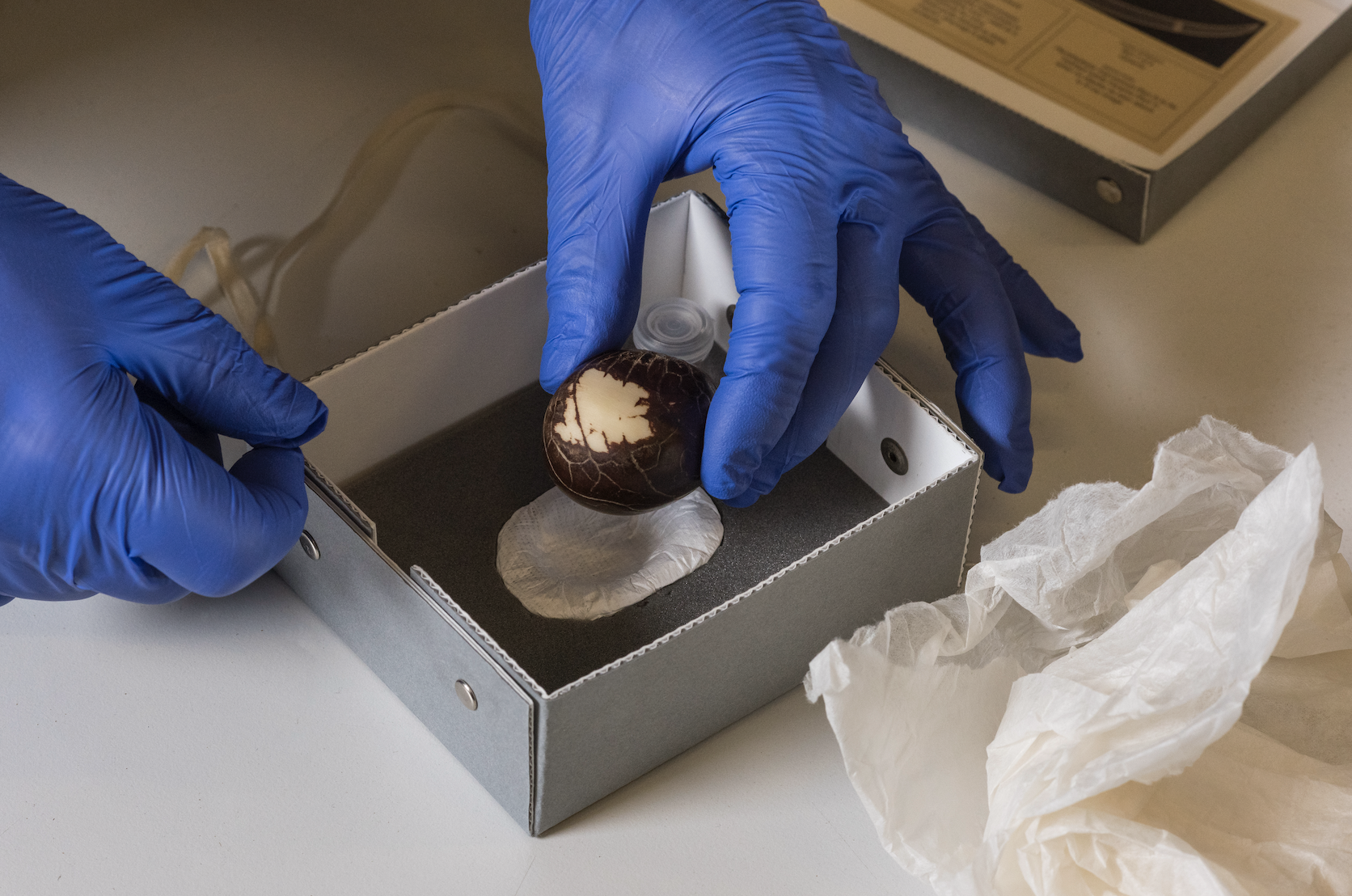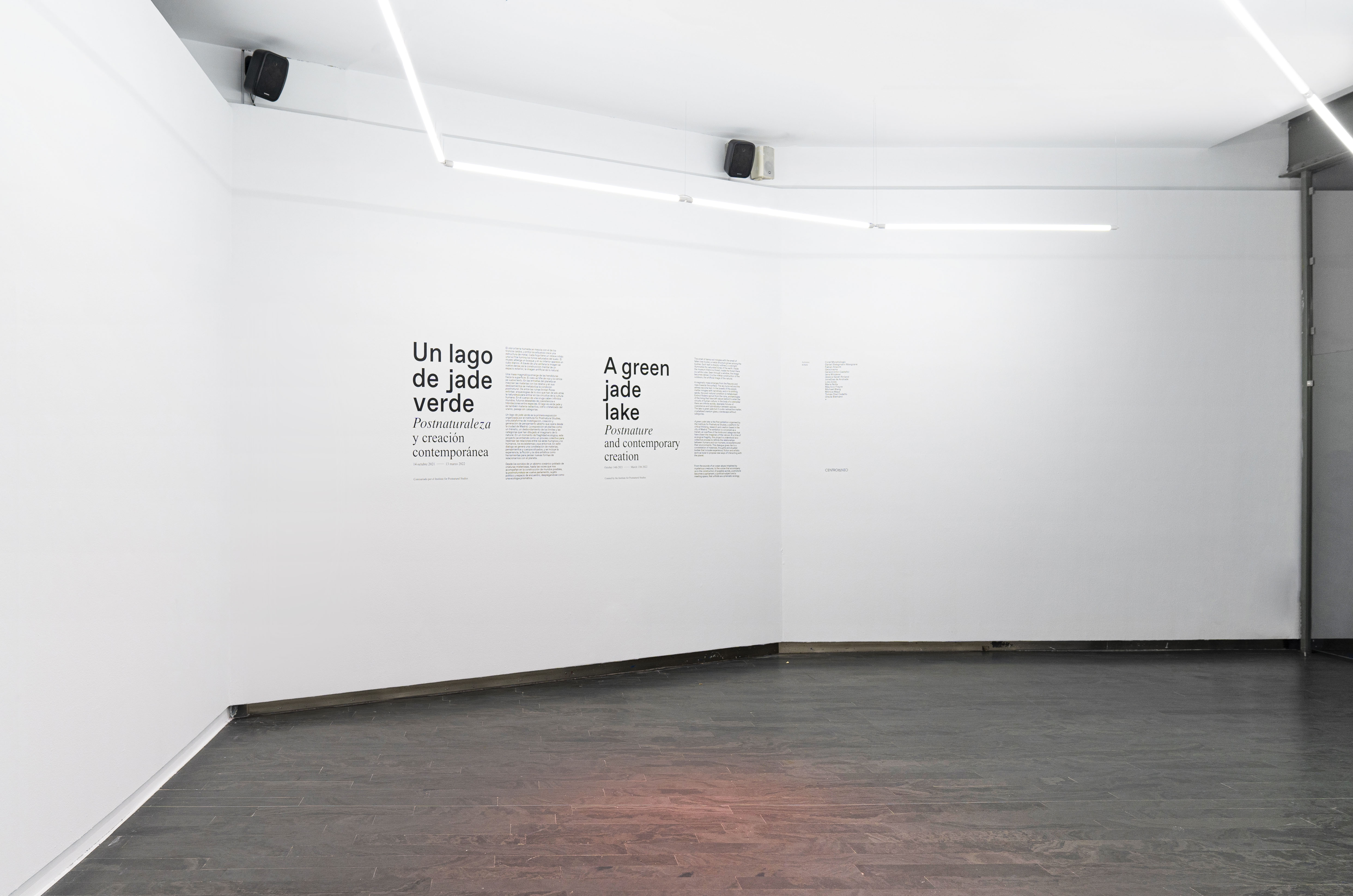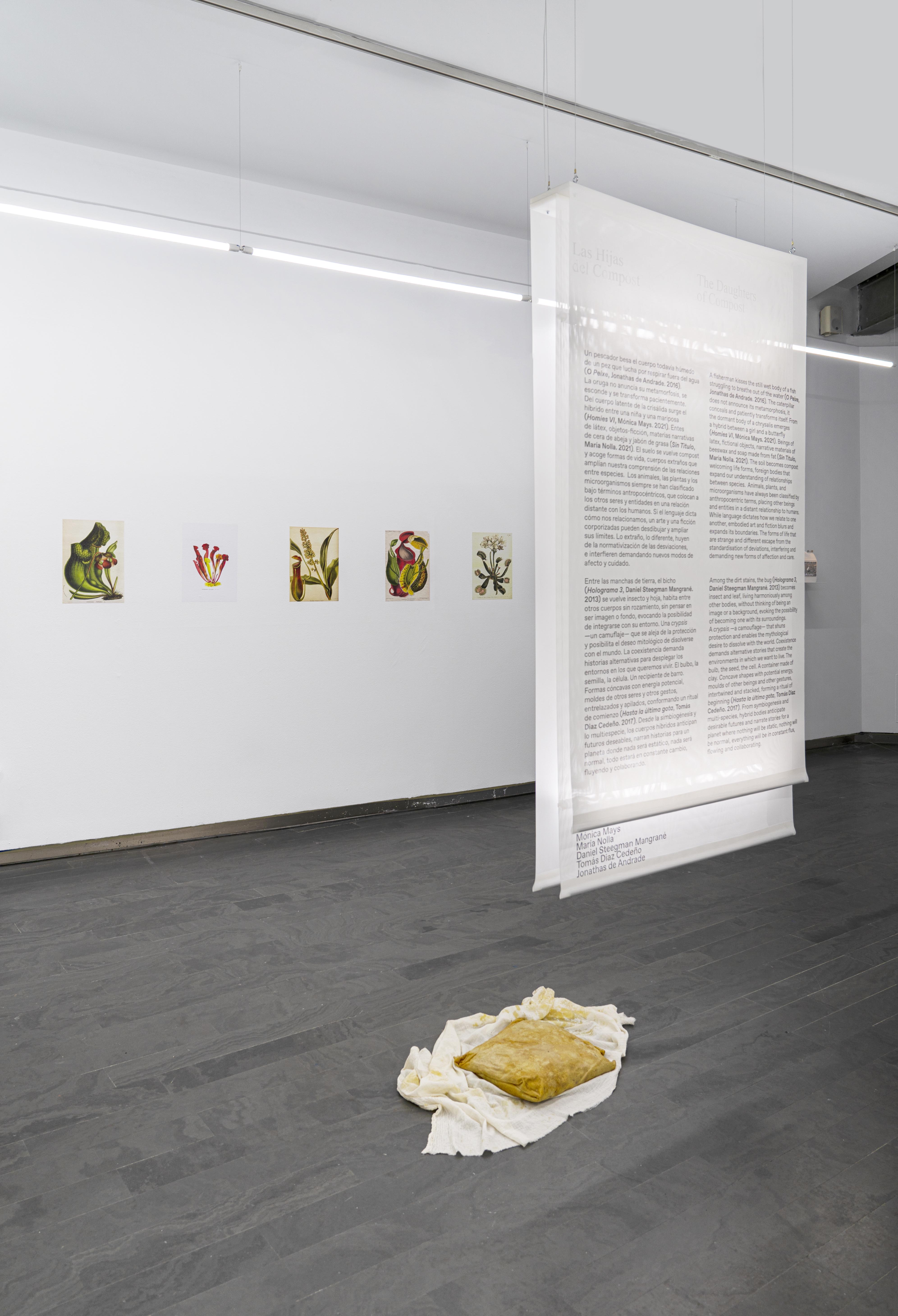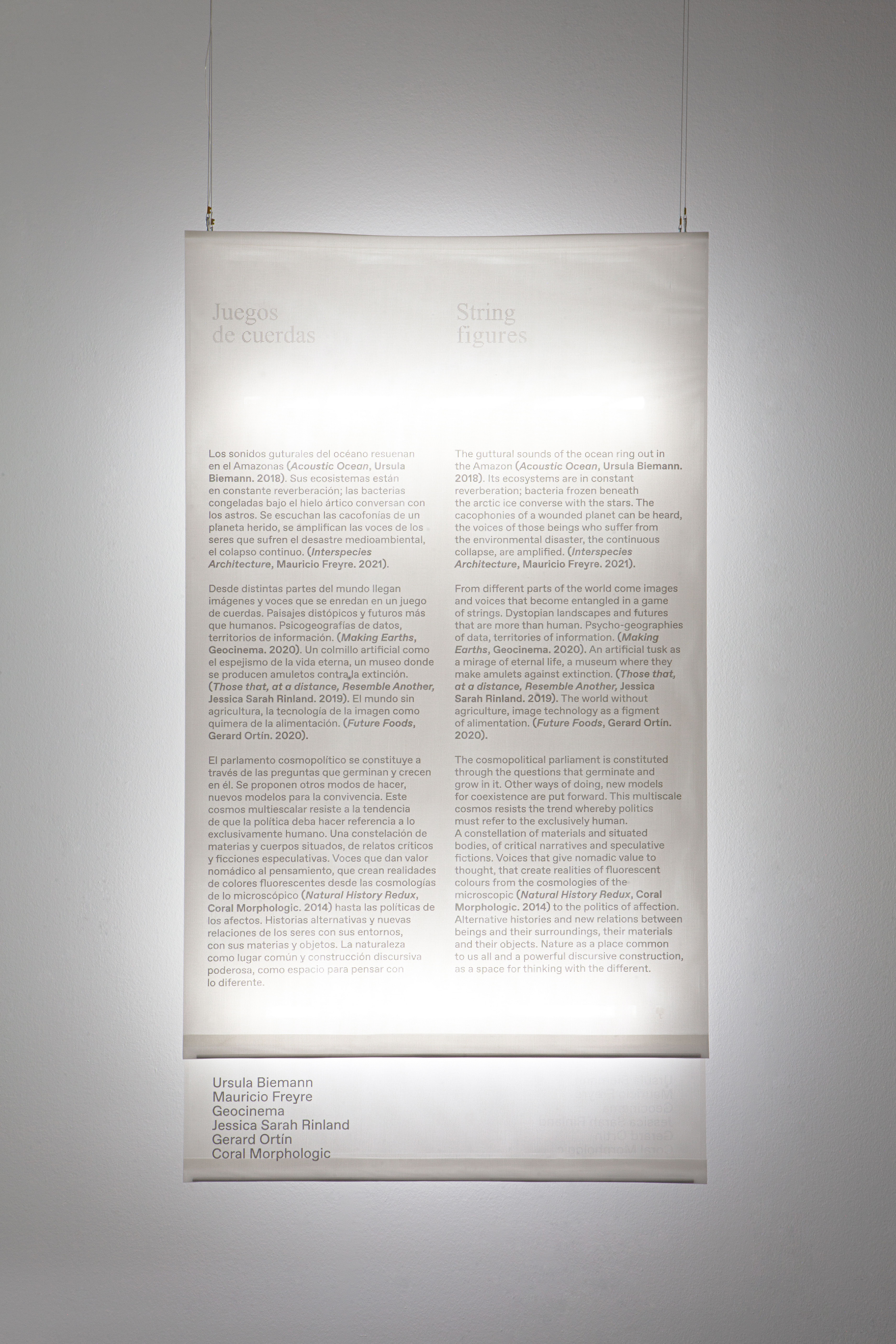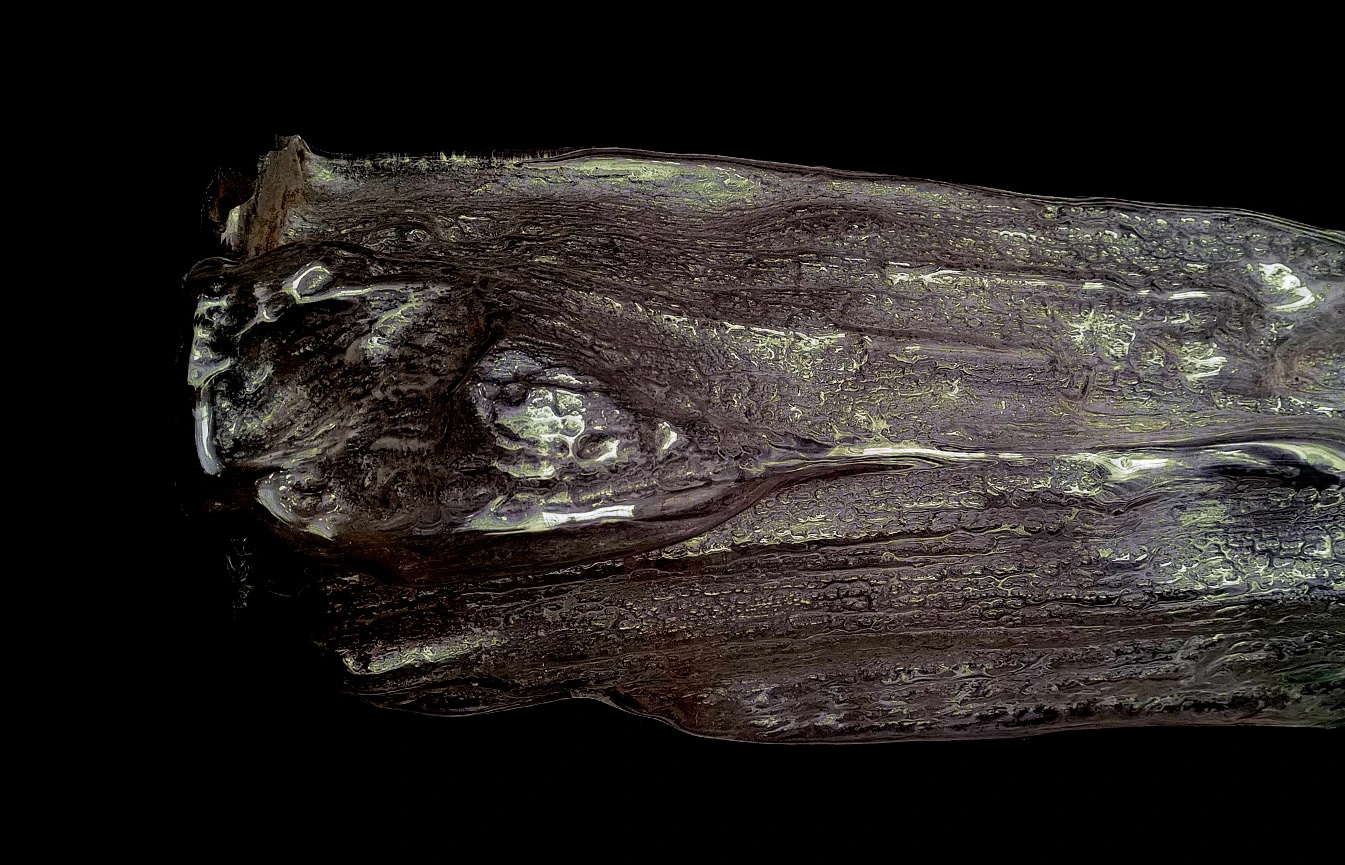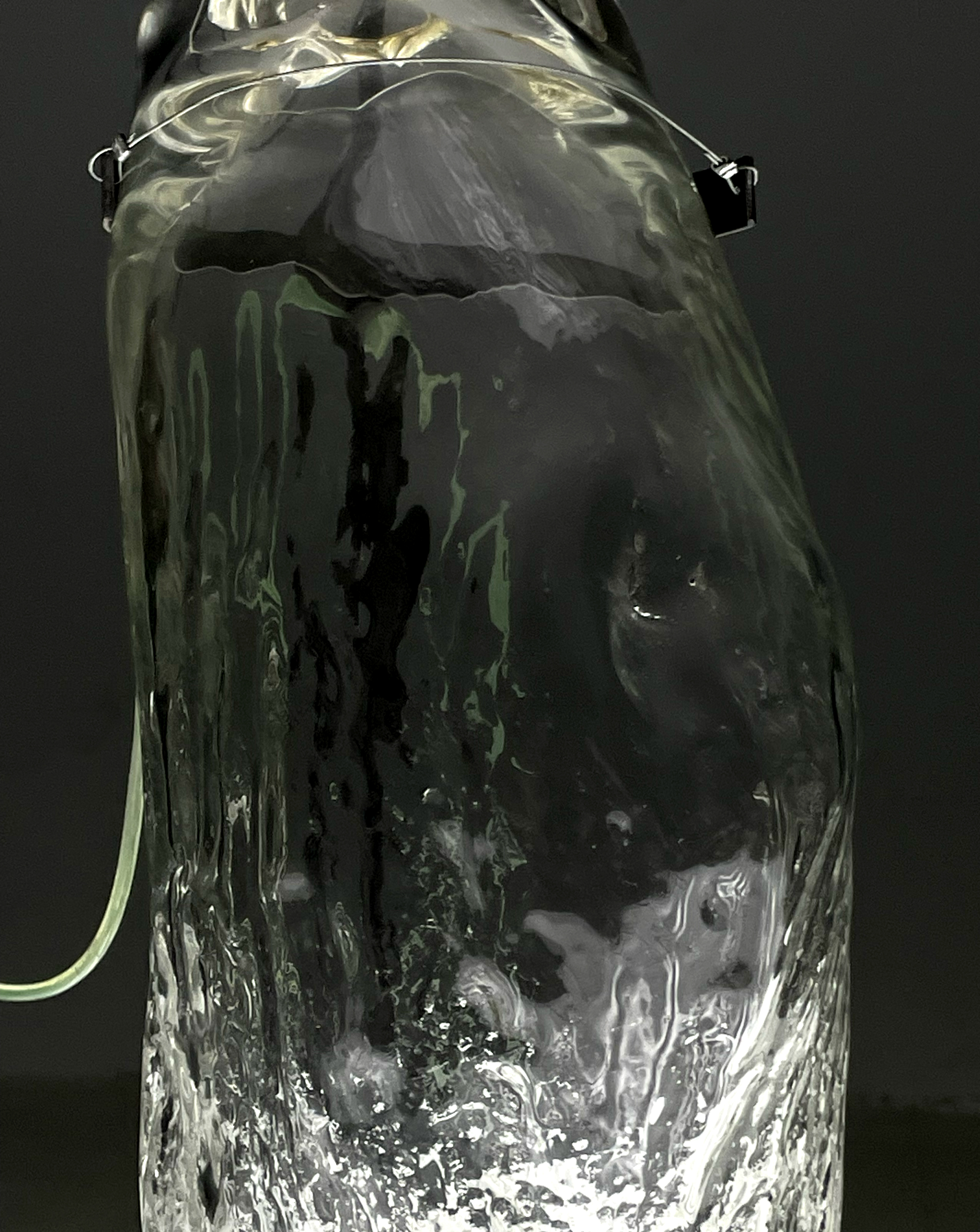A Green Jade Lake

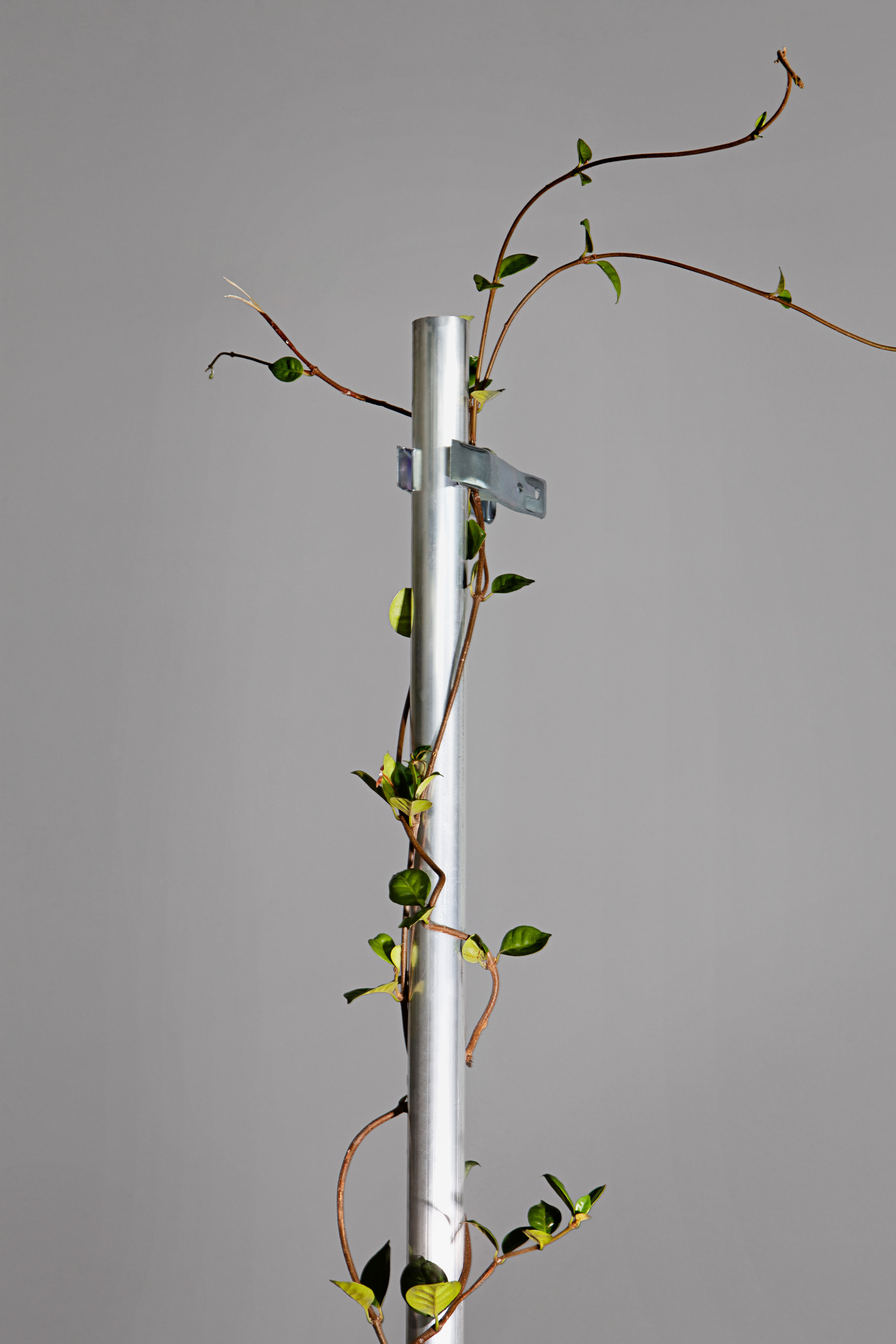
General info
- LOCATION
-
Madrid, Spain
- Commissioned by
-
CentroCentro
- Dates
-
13/10/2021 – 14/02/2022
- Typology
-
Exhibition
- With works by
-
Daniel Steegmann Mangrané, Fabian Knecht, Jana Winderer, Jonathas de Andrade, Michael Wang, Mónica Mays, Tomás Díaz Cedeño, Lola Zoido, Maria Nolla, Geocinema, Gerard Ortín Castellví, Coral Morphologic, Mauricio Freyre, Ursula Biemann, Jessica Sarah Rinland and more.
Introduction
The exhibition brought together experience, fiction, artistic work, and research to allow us to explore new ways in which we can interact with the planet. Dealing as it did with different subjects, such as coexistence, botany, territorial policies, and the aesthetics associated with the representation of nature, the exhibition was understood as a constellation that created open and transformative universes. This invitation to reflect and ponder on human action in the world endeavored to bring us closer to ecology from different perspectives and to increase our curiosity about the stories that lie hidden behind art and culture.
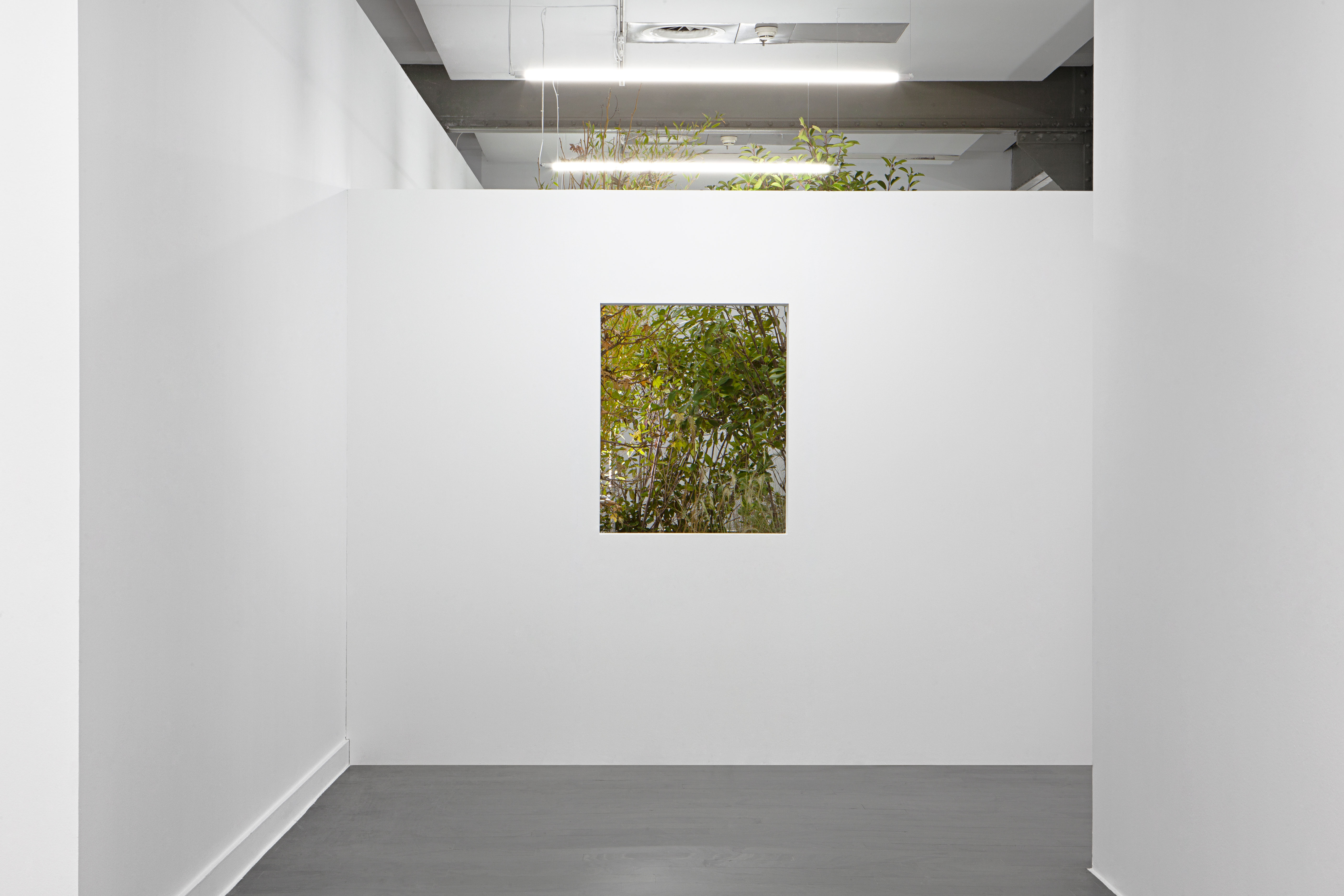
Exhibition entrance
In a situation of ecological fragility, we need to rethink the relationships and flows that are established between humans, ecosystems, and their environment, and to take into consideration the differences that exist between the natural and the artificial. “A Green Jade Lake”, the first exhibition to be curated by the Institute for Postnatural Studies, was envisaged as an experiential journey that invited the visitor to wander through its different rooms and landscapes to reflect on the idea of nature today.
There are many ways to understand a museum. Probably as many as the number of people who visit it, think about it, walk through it, or inhabit it. But if we have learned one thing during this process, it is that a museum can be a place in which to unlearn. To question what we thought we knew, and to draw closer to such marvelous places as uncertainty, doubt, and questioning.

Un Lago de Jade Verde, CentroCentro. Photo Paula Caballero
If an exhibition, and therefore an institution, transitions from knowing to caring, it will be able to address the emotional relationship that binds people to ideas and thereby become a place of attachment rather than consumption. And it is from this change of perspective that we have tried to make this exhibition, which is not just an exhibition, work. Like a game of mirrors, a kaleidoscope gives new meaning to what is shown, which changes depending on who looks at it and how, which constantly mutates, alters, and transforms itself.
The research, texts, works, and installations that we have brought together in this space have come to draw a new landscape in which these bonds enter into dialogue with each other, give new meaning to each other, and accompany each other. And it is precisely in these invisible lines, in these improbable relationships, in these new configurations, that the real meaning of the project has emerged. Curating becomes an act that demands all our attention - all our care - because in these constellations a new configuration, a new meaning, can emerge. Understanding the exhibition as a chain of interactions also echoes the hybrid philosophies of Donna Haraway, Lynn Margulis, and Rosi Braidotti. In their work, the relational approach moves away from a naturalistic view and helps us to understand that nature is no longer the unified field of the non-human, but rather a complex conglomerate of culture-natures, symbiotic entanglements, or hybrid objects.
Chapter I
The word for world is forest
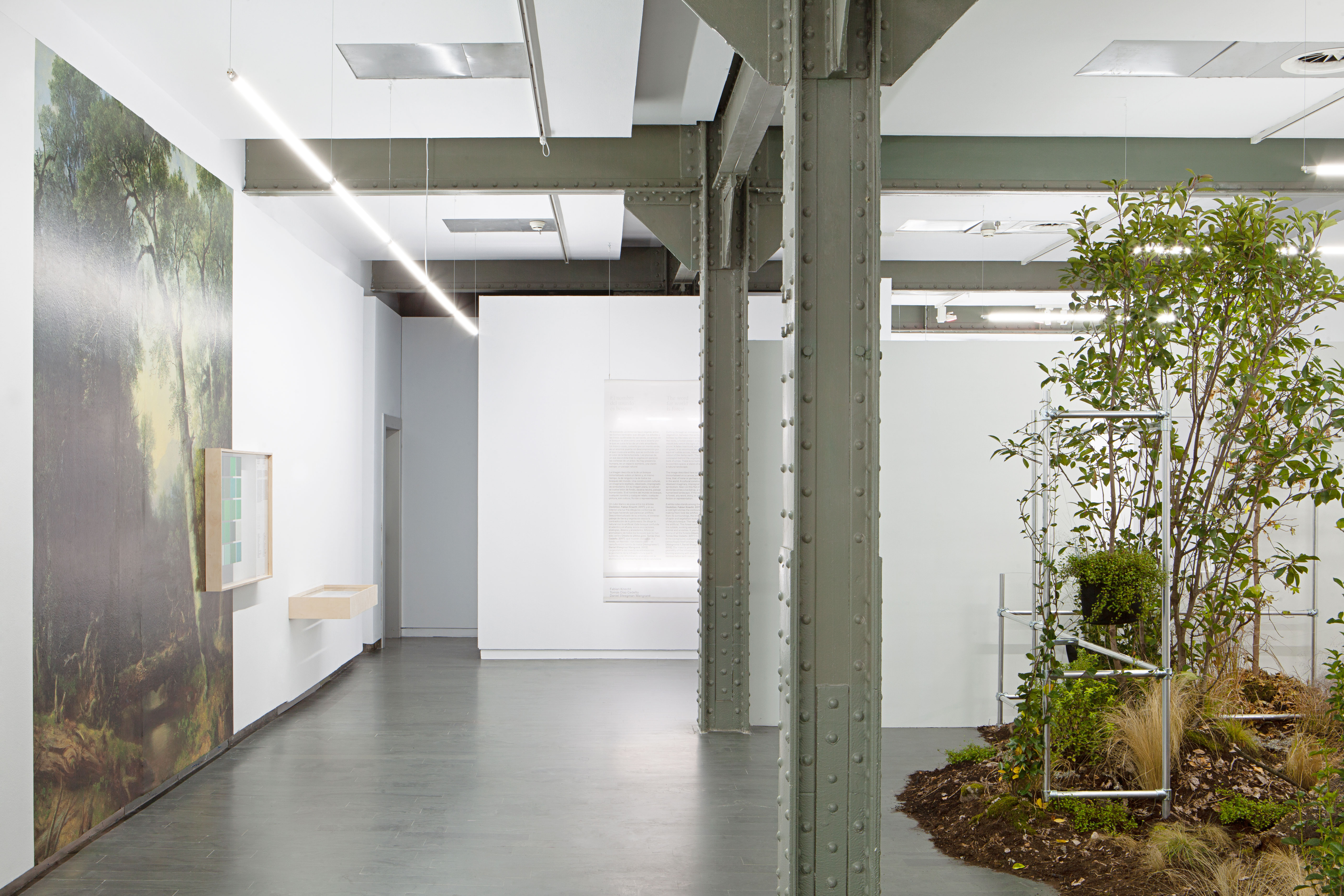
The Word for World is Forest, A Green Jade Lake, 2021
Cutting through an immense tapestry of vegetation, between the vertical patterns formed by the trees and the fractured lines of the roots, a forest stream emerges like a gaping mouth into which the light of a yellowish sky pours. A fallen tree trunk, shrouded in a blanket of green, is an enormous decaying bridge that a squirrel rushes across, blending in with the color of the damp earth. The feathers of a bird concealed behind the vegetation resemble the bark of a tree. There is no human presence; this is a somber space, a vision of wilderness: a natural landscape.
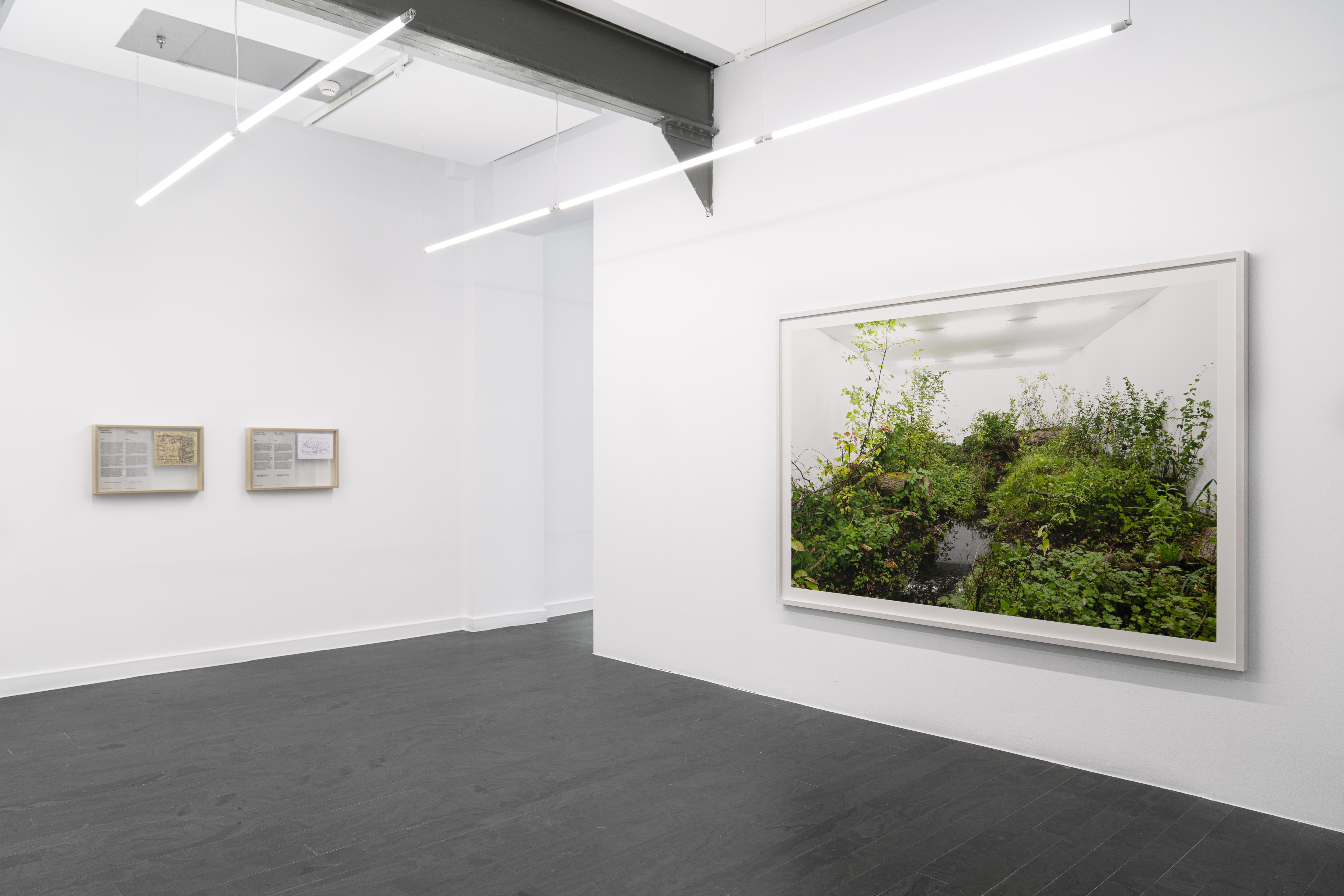
Isolation, by Fabian Knecth
The image described here is that of a forest immortalized on a canvas, and at the same time, that of none or perhaps all of the forests in the world. A cultural construction, an exalted, idealized imaginary, impregnated with symbolism. As seen in this flat image, the natural world becomes a backdrop, a neutral scene, a humanized landscape. If the word for the world is forest, any word, story, or painting, is culture, fiction, or representation.
A white cube stands among the trees. (Isolation, Fabian Knecht. 2019) In its interior, a cold light etches the contours of the leaves, making them look like artifice. Decontextualized from its surroundings, the immense landscape of earth and vegetation evokes the contradiction of the picturesque. The natural is diluted with the artificial. This forest confuses the inside and the outside, evoking associations, analogies, desires, and anxieties. It yearns for the distant aroma of all the forests (Hasta la última gota, Tomás Diaz Cedeño. 2017) that die forgotten. In the background, a phasmid - a stick insect - camouflages itself among metal irons (Hologram 1, Daniel Steegman Mangrané. 2013) . The insect’s geometry interlaces with the geometry of the infrastructure that sustains it, blurring anatomy with abstraction, and representation with nature.
Chapter II
The year without a summer
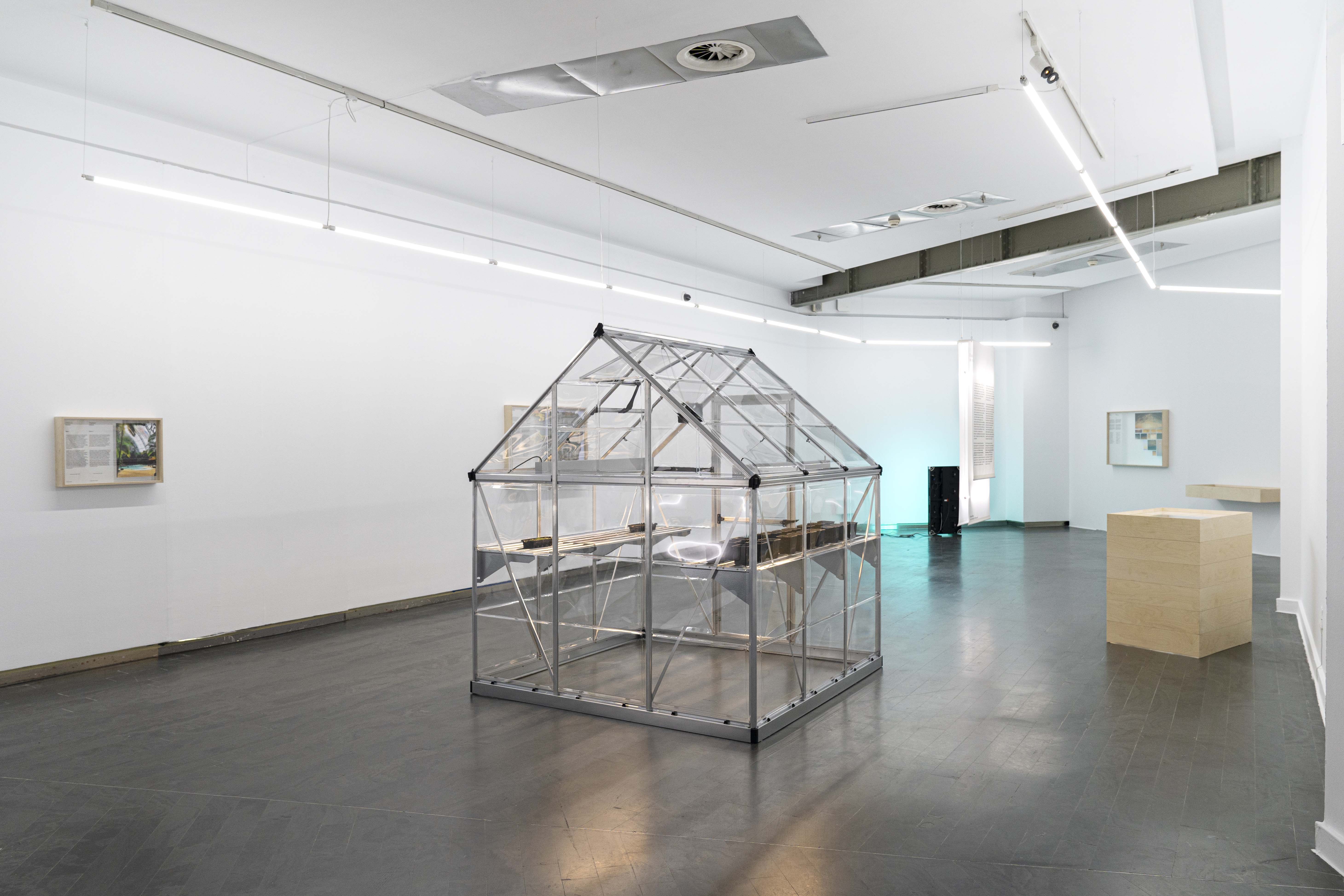
The Year Without a Summer. Photo: Paula Caballero
The bright sun fades and the sky is devoid of stars. It wanders in eternal space, blackened in moonless air. A volcano spits out lava and bares its tongues of flame. The cloud carries away the matter, inundating itself with tephra and ashes. The light, the mist, and all the paintings turn red.
In its tormented landscapes, the violence of modernity is captured; monsters and fears of an unexpected winter. In the year without a summer, beauty is confronted, and the boundary between the nature of the world and its cultures is fractured. Climates spill over the texts, the words are confused with the atmosphere. The medium becomes cartography; temporalities and countless stories coexist in the volatile particles. Immersed in toxic air, we dream of climate-controlled bubbles that allows us to forget the possibility of a world without us. Nature becomes a simulation Tropical Island, blurring the lines between the real and the imaginary, between the present, the future, and the past.
Extinct flowers sprout from the ruins, and archaeology of the living that have left nature behind enter the circuits of human culture (Extinct in the Wild, Lysimachia minoricensis, Michael Wang. 2017-2021). In the age of extinction, displacements represent real survival strategies. The room becomes a greenhouse, a space for gardening and caregiving. A living organism reminds the curator of its roots.
Chapter III
A Green Jade Lake
On the sand of a desert thousands of kilometers away, the halo of a suspended landscape draws blurred outlines that look like ocular globes on the surface of the planet. At its center, was a tiny, intensely black dot. Around that dot, the world seems to melt into a glassy ocean. The disc becomes abstract. Shortly afterward, a digital image emerges, an immaterial rock (An aesthetic lithium alternative vray unreal engine hyperrealistic, Lola Zoido. 2021) like a ghost of all things mineral.
The geological no longer refers only to the ground beneath our feet. It is matter and it is information, it is rock sediment and data; it is the deep layers of the planet and its emerging economies. Geology is a new politics that implies interactions between living organisms and inert matter. There is no linearity to it, no arrow of time, no history, science, or nature. There are grottoes that connect, networks that bind, and interwoven mixtures; stratifications and naturecultures.

Our machines and devices drill, tear and extract matter from the bowels of the earth; they climb back up towards the crust, in an unsustainable circularity, blind to imbalance. On the palm of a hand, a mountain; on a glassy desert, a body. The finger slides across the screen and draws illegible anagrams on the polished fossil of a rare stone. From each tactile movement, from each image that emerges, the echoes of endless emptyings reverberate across the landscape.
Chapter IV
Children of compost
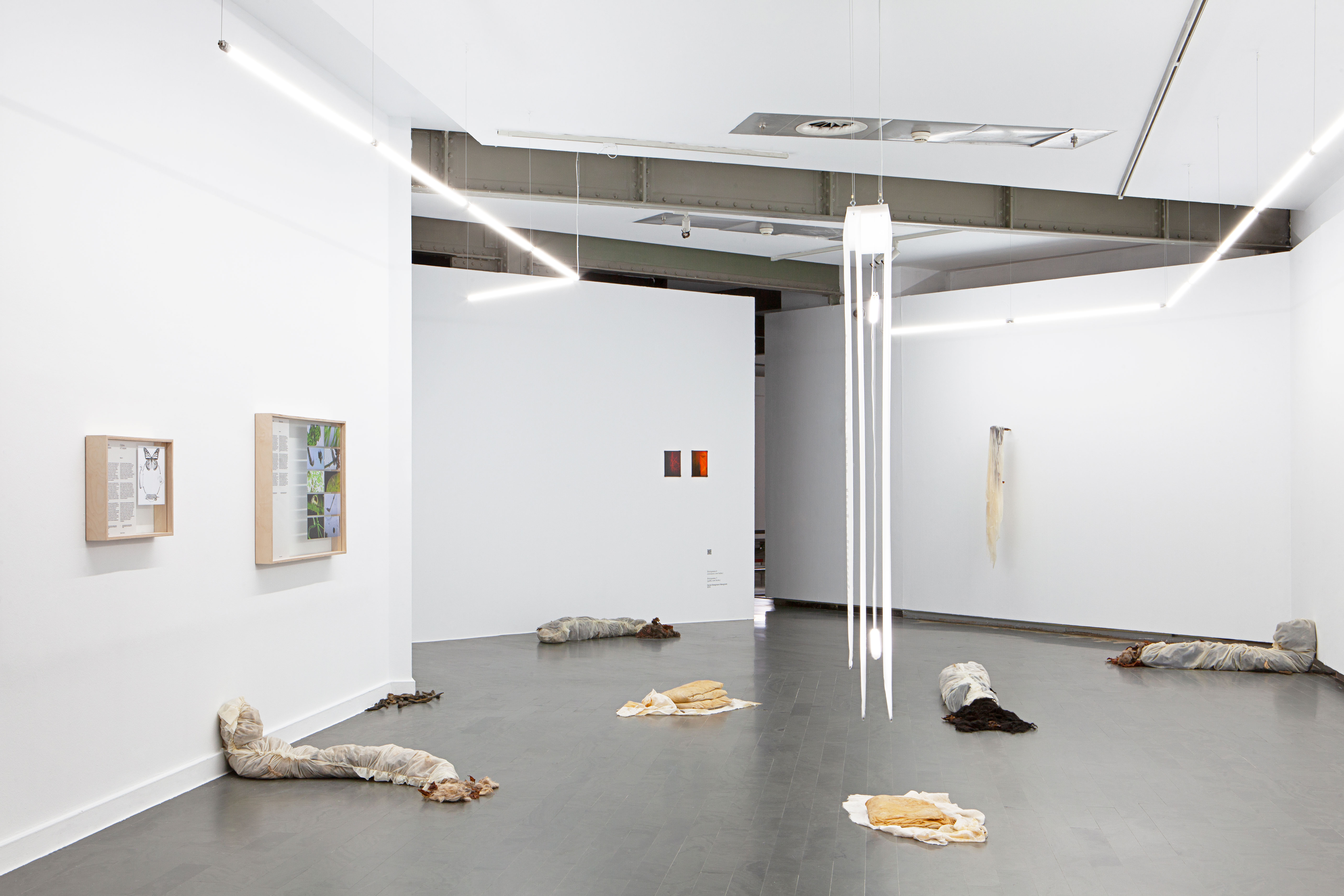
Children of Compost, A Green Jade Lake, 2021
A fisherman kisses the still wet body of a fish struggling to breathe out of the water O Peixe, Jonathas de Andrade. 2016. The caterpillar does not announce its metamorphosis, it conceals and patiently transforms itself. From the dormant body of a chrysalis emerges a hybrid between a girl and a butterfly Homies vi, Mónica Mays. 2021. Beings of latex, fictional objects, narrative materials of beeswax, and soap made from fat (Sin Título, María Nolla. 2021). The soil becomes compost, welcoming life forms, foreign bodies that expand our understanding of relationships between species.
Animals, plants, and microorganisms have always been classified by anthropocentric terms, placing other beings and entities in a distant relationship to humans. While language dictates how we relate to one another, embodied art and fiction blur and expand their boundaries. The forms of life are a strange and different escape from the standardization deviations, interfering and demanding new forms of affection and care.
Among the dirt stains, the bug (Holograma 3, Daniel Steegman Mangrané. 2013) becomes an insect and leaf, living harmoniously among other bodies, without thinking of being an image or a background, evoking the possibility of becoming one with its surroundings. Crypsis—a camouflage— that shuns protection and enables the mythological desire to dissolve with the world.
Coexistence demands alternative stories that create the environments in which we want to live. The bulb, the seed, the cell. A container made of clay. Concave shapes with potential energy, moulds of other beings, and other gestures, are intertwined and stacked, forming a ritual of beginning (Hasta la última gota, Tomás Diaz Cedeño. 2017). From symbiogenesis and multi-species, hybrid bodies anticipate desirable futures and narrate stories for a planet where nothing will be static, nothing will be normal, and everything will be in constant flux, flowing and collaborating.
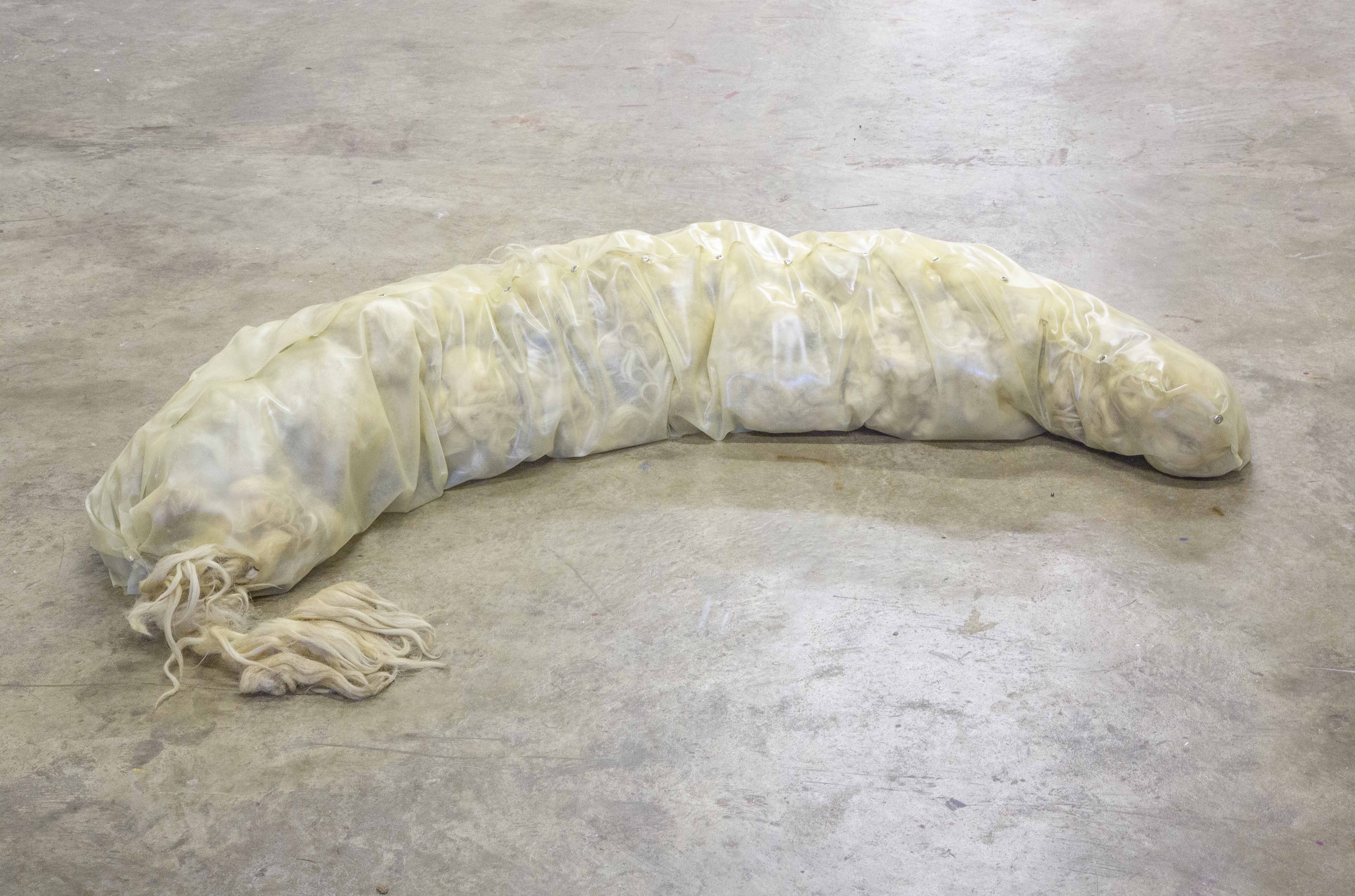
Homies VI, Mónica Mays. 2019
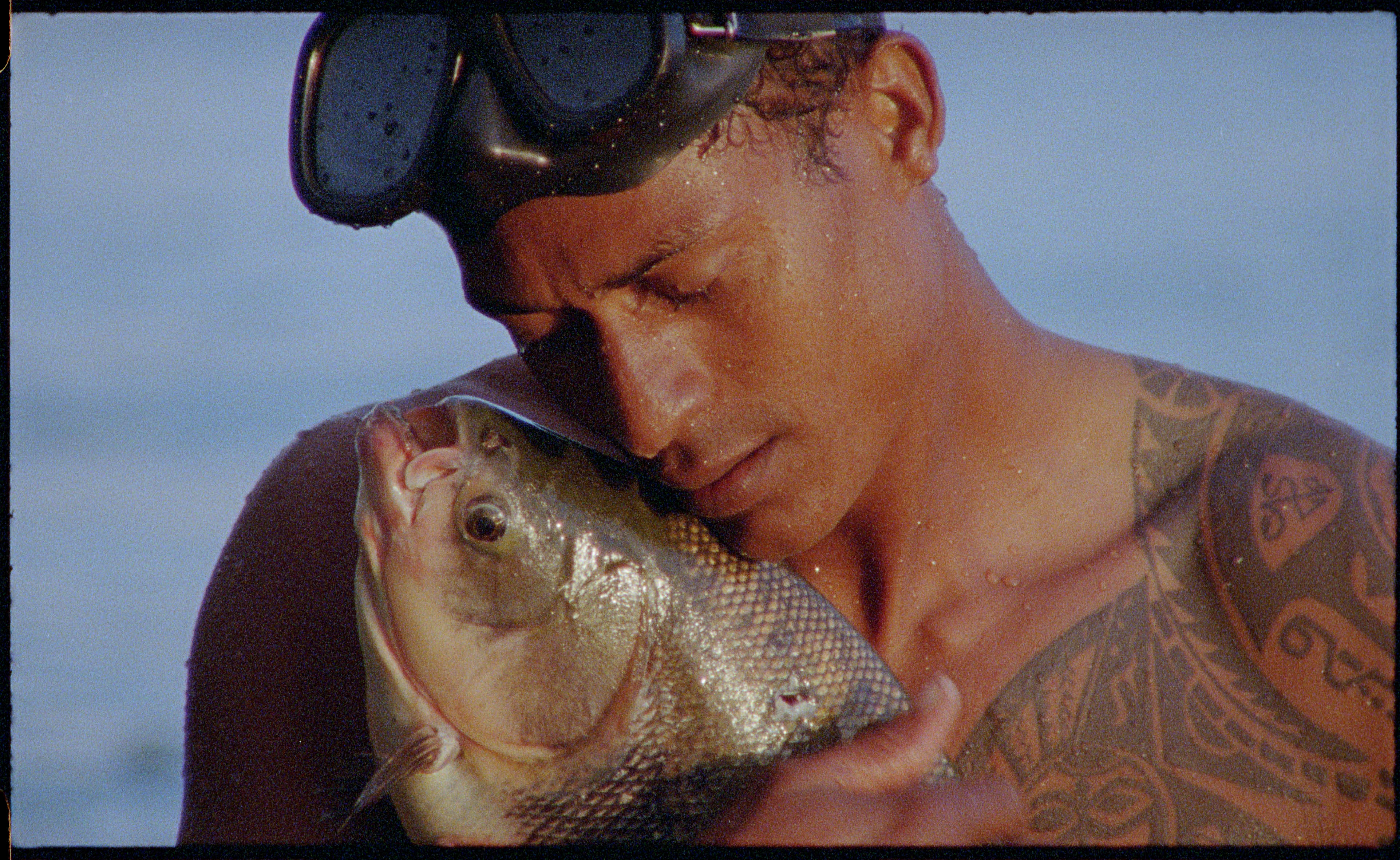
O Peixe, Jonathas de Andrade. 2016
Chapter V
String figures
The guttural sounds of the ocean ring out in the Amazon (Acoustic Ocean, Ursula Biemann. 2018). Its ecosystems are in constant reverberation; bacteria frozen beneath the arctic ice converse with the stars. The cacophonies of a wounded planet can be heard, and the voices of those beings who suffer from the environmental disaster, the continuous collapse, are amplified(Interspecies Architecture, Mauricio Freyre. 2021).
From different parts of the world come images and voices that become entangled in a game of strings. Dystopian landscapes and futures that are more than human. Psycho-geographies of data, territories of information (Making Earths. Geocinema. 2020). An artificial tusk as a mirage of eternal life, a museum where they make amulets against extinction (Those that, at a Distance, Resemble Another, Jessica Sarah Rinland. 2019). The world without agriculture, image technology as a figment of alimentation (Future Foods. Gerard Ortín Castellví, 2020).
Exhibition Design
The cosmopolitical parliament is constituted through the questions that germinate and grow in it. Other ways of doing, new models for coexistence are put forward. This multiscale cosmos resists the trend whereby politics must refer to the exclusively human. A constellation of materials and situated bodies, of critical narratives and speculative fiction. Voices that give nomadic value to thought, that create realities of fluorescent colors from the cosmologies of the microscopic (Natural History Redux, Coral Morphologic. 2015) to the politics of affection. Alternative histories and new relations between beings and their surroundings, their materials, and their objects. Nature is a place common to us all and a powerful discursive construction as a space for thinking with the different.
Credits
- Design and Curation
-
Institute for Postnatural Studies
- Production
-
V15
- Photos
-
Laura Caballero, Asier Rúa
